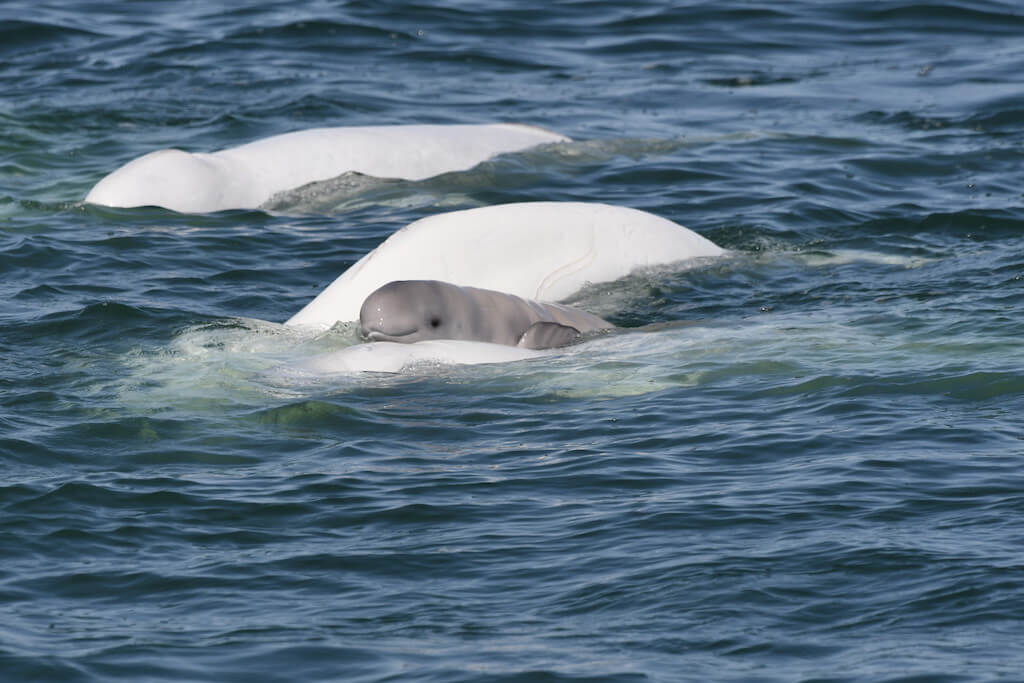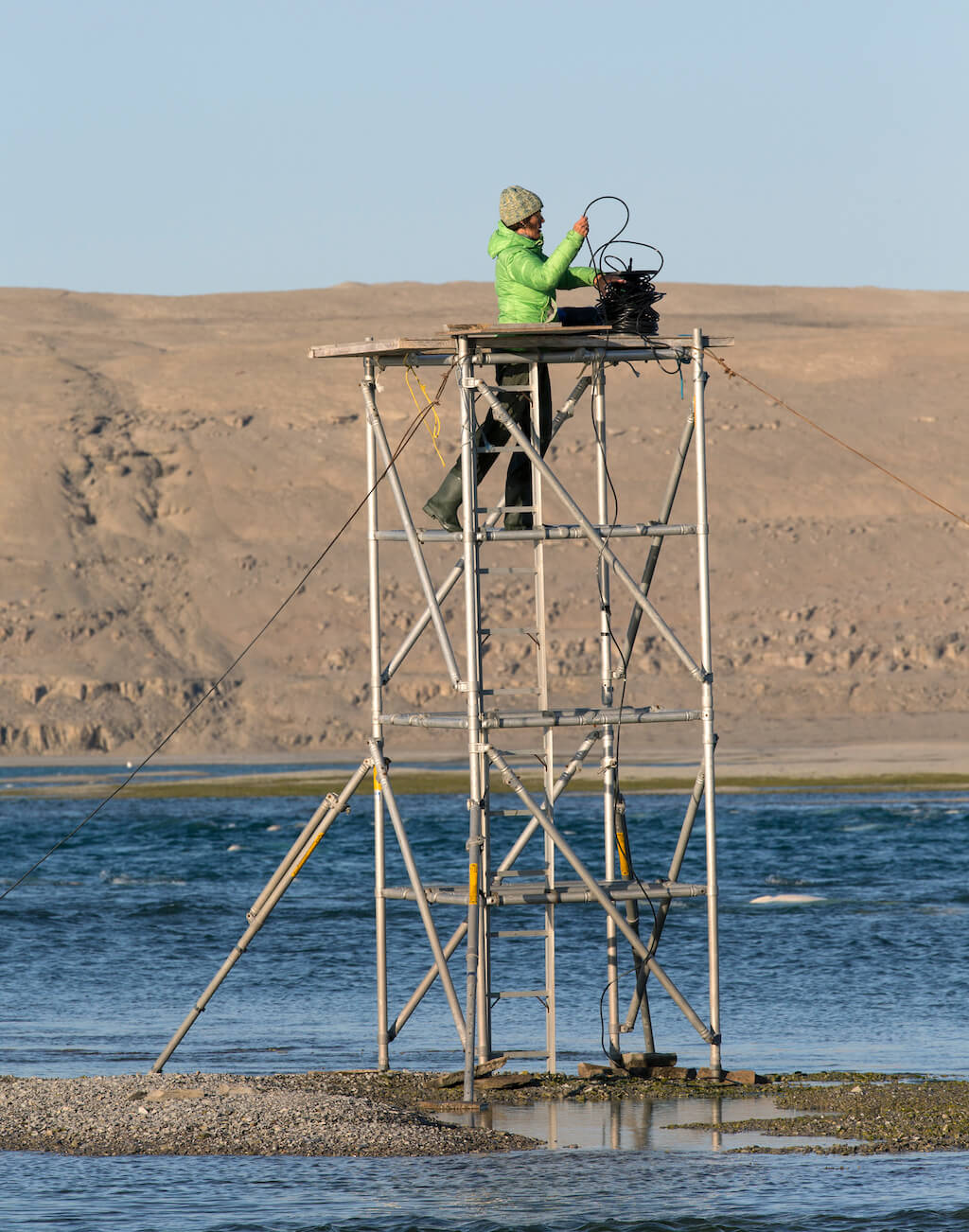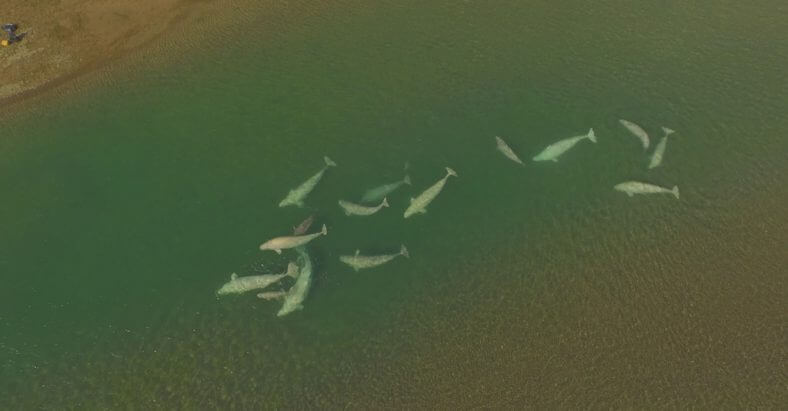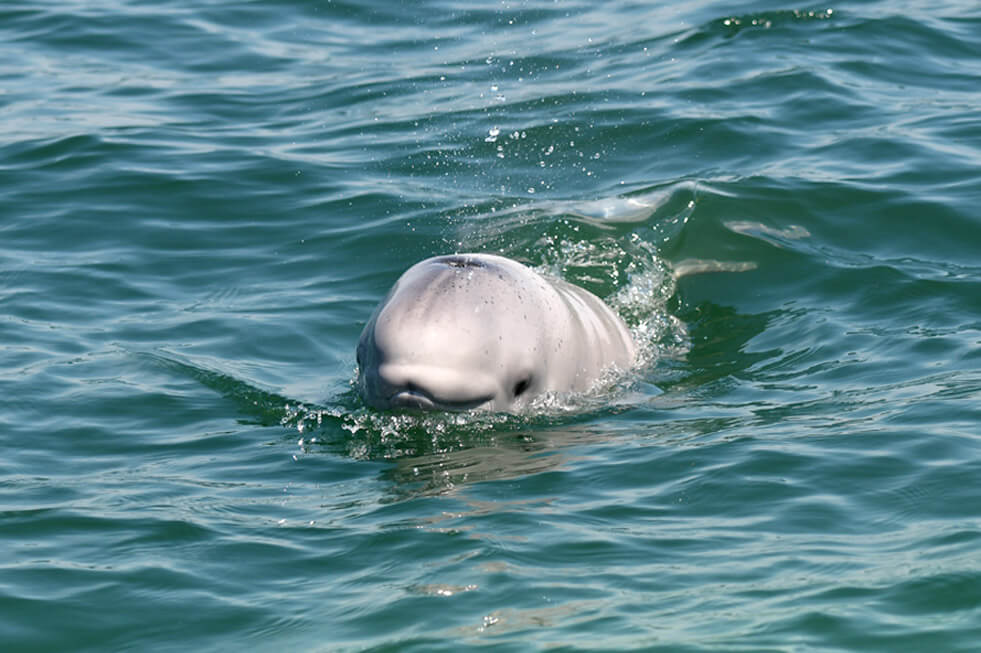A herd of belugas breaks through the surface of the water as their squawks, chirps, whistles and grunts fill the surroundings below – it becomes clear why they are nicknamed “canaries of the sea”. Could their sounds help tell them apart?
In an exciting breakthrough, Valeria Vergara and Marie-Ana Mikus from the Marine Mammal Research Program at Ocean Wise Conservation Association have found preliminary evidence of contact calls acting as vocal signatures in wild belugas.
“We have been studying this species without knowing what they were saying. We now know their ‘hello’ and ‘hello, my name is’,” exclaims Vergara
Belugas are highly gregarious and social animals. They have matrilineal societies with strong sexual segregations during their summer concentrations when herds of females and young return to the same coastal areas year after year—a phenomenon called site fidelity. “For a beluga, the value of site fidelity is good knowledge of that area during the first months of life of beluga offspring. It is a good strategy to increase their survival,” explains Robert Michaud, Scientific Director and President of the Group for Research and Education on Marine Mammals (GREMM).
One such summer concentration occurs in Cunningham Inlet in the Canadian Arctic where Vergara conducted her study in in the summers of 2014 and 2015. There, about 2,000 Eastern High Arctic-Baffin Bay belugas are nestled away from the hustle and bustle each year, making this inlet a perfect location to study belugas. It helped Vergara develop a baseline about the nature of these universal calls in a pristine environment.
Belugas can produce a medley of sounds, out of which Vergara identified 28 different types. Contact calls are one of these 28 types of calls. They are stereotyped broadband rapid pulse trains of relatively long duration that are loud and can be transmitted over long distances under the water. Acoustically, they stand apart from the rest of the repertoire.
Over 60% of all calls produced by the entrapped herd were contact calls, which make up the majority of call types in this audio. Mothers and calves communicate with each other using contact calls, and other belugas also use them when there is a need for group cohesion.
“Contact calls are a biologically important call in the repertoire of not only beluga whales but also of many other social birds and mammals, like narwhals” explains Vergara.
She had been studying these calls in captive belugas at the Vancouver Aquarium since 2002. It was there she first discovered contact calls and that these highly social whales use them immediately after births and deaths, and when reunited after forced separations. She also found that wild belugas used these calls in similar situations as captive ones, based on recordings from Nelson River and St. Lawrence Estuary individuals. She now applies her vast knowledge to their wild counterparts, such as the ones that visit Cunningham Inlet.
Though it is mothers and calves that predominantly use contact calls, others also use them in situations of isolation that give rise to a need to re-establish contact, which she observed in her study.
Vergara recorded calls of belugas when curious members of a herd travelled into a river channel with the flowing tide each day and could not make their way back for several hours. Sandbars naturally entrapped them and separated them from the rest of the herd. She collected her data during 14 of these entrapments over her study period and found that over 60 per cent of all calls produced by the entrapped herds were contact calls.
There are two types of contact calls: simple and complex (mixed, with two types of acoustic elements produced simultaneously). Vergara categorized over 8,000 complex call recordings from the entrapments into 87 distinct types based on their spectrograms.
She found a strong relationship between the number of individuals and the number of complex contact call types per entrapment. This suggests that either one individual produced a unique complex contact call type or related individuals, for instance: mother and her offspring, produced the same call type. Moreover, there was a “response” call recorded within 2 seconds for almost 70 per cent of all complex contact calls.
Decoding this significant mystery of the beluga acoustic world has led Vergara to more questions about the uses of contact calls and how they change in acoustically busier environments.
Next, she would like to see if it is possible to successfully assign particular complex contact call types to specific individuals or closely related animals
Vergara hopes to begin to identify the St. Lawrence belugas by their “acoustic name-tags”, which would complement GREMM’s photo-identification efforts. In an on-going collaboration with Robert Michaud from GREMM, Vergara reveals they have already started this project. So far, they have been able to match one individual, named Neo, to a distinct complex contact call.
What will future studies reveal about these vastly vocal whales? Stay tuned.









